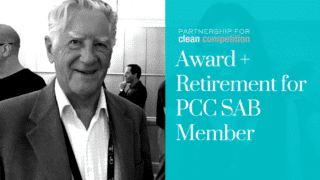The anti-doping movement is constantly evolving to mitigate prohibited performance-enhancing activities and ensure the protection of clean athletes. At times, opinions on the direction anti-doping administrators should pursue vacillate wildly, making for a complex and challenging global conundrum.
The PCC, however, has never wavered from its core mission: funding the excellent and innovative research on which to build the scientific foundation for combatting threats to clean sport.
As it goes, this mission is not without its challenges.
Anti-doping scientists pursue discovery both proactively and reactively due to the evolving nature of performance-enhancing drug (PED) abuse. In 2016, researchers must address certain doping methods after they have already become a problem. ‘Designer’ PEDs which potentially evade current testing methods are becoming increasingly sophisticated in an attempt to provide difficult-to-detect competitive advantages. For example, erythropoietin (EPO), which improves delivery of oxygen from the lungs to the working muscles and was developed to help individuals with legitimate medical issues, was being abused by several high profile athletes before being identified by anti-doping administrators. Research determining detection methods for EPO were thusly reactive.
In other cases, an anticipatory approach by scientists can mitigate PED abuse. Through paying attention to irregularities in samples and pursuing innovation, scientists can identify potential threats to clean sport, as well as preemptively determine methods for regularly detecting and measuring them in samples. This approach, which enhances deterrence, is preferred but can be difficult at times. Many PEDs are the engineered cousins of naturally occurring analytes in the body, so proactively identifying them can be arduous. Biochemist and PCC researcher Dr. Mario Thevis attests, “whatever is identical to the human body is very difficult for us to identify and to prove that this substance was a misuse of a drug rather than a natural variation.” This means funding multiple research projects for a single substance of interest may be required to collect all necessary data, which is both costly and time consuming.
Finally, anti-doping researchers experience impediments not seen in other disciplines. Detection of a prohibited substance or method may require administration of an unapproved drug to healthy volunteers to assess metabolism or evaluate the best means of indirect detection. Anti-doping scientists, who uphold the highest ethical codes, must often wait weeks or months for institutional review board (IRB) approval to work with human subjects, which delays results. The desire to quickly inform administrative bodies, athletes, and the public of the effects of new and unfamiliar substances is thus oftentimes impeded by (necessary) administrative processes, through no fault of the researcher.
So how does the PCC combat pervasive industry challenges to scientifically address doping in sport?
First, the PCC develops novel and original programs which complement traditional research efforts. PCC Working Groups facilitate collaborative approaches to research needs identified by industry experts, while PCC Micro-Grants provide incredibly efficient funding turnaround for narrow issues that cannot wait until the next funding cycle. The micro-grant program facilitates rapid responses to newfound industry uncertainties (reactive) and/or the preliminary data needed to pursue discovery research (proactive). This provides the opportunity to investigate newfound designer substances or develop necessary testing methodologies sooner. Most recently, the micro-grant program funded a study on a breath analysis technique that may provide effective testing within professional leagues and the Olympic Movement. The technique would preemptively enhance testing methodology, making it quicker, cheaper, and less invasive to administer – and the micro-grant program will trigger the questions to be addressed by more in depth studies.
Working with our industry partners, sponsors, and stakeholders, the PCC has also defined research priorities which guide our funding mechanisms. These priorities help us navigate ever changing industry needs, to include testing methodologies, laboratory excellence, pharmacology, and new concepts. Ensuring all priorities are met helps equalize scientific discovery within both the reactive and proactive spheres, providing a balance between resolving existing challenges and pursuing innovation.
Finally, and most notably, the PCC is privileged to have access to the premier intellectual capital, who are able to inform and refine anti-doping best practices. Such expertise exists both on our Scientific Advisory Board, responsible for guiding and approving funding projects, and the researchers we fund. Both groups have the expert knowledge, contacts, and well-honed instincts to catalyze proactivity in an often reactive environment, which plays a critical role in bridging the gap between PEDs currently on banned lists and those that administrative bodies have little – or no – information about. These experts are also able to identify research areas for future expansion, raise awareness of challenges in the anti-doping sphere, and perform research which triggers new questions to be preemptively addressed.
For instance, In the case of Mildronate (Meldonium), added to the prohibited list in 2016 by the World Anti-Doping Agency (WADA), it was the high prevalence of the substance that alerted PCC researchers to a potential problem in 2013. This observation ensured that research regarding the substance was funded and provided part of the information necessary for WADA to add it to the Prohibited List.
In short, the anti-doping field is dynamic and ever changing, and the desire to win at nearly any cost is an issue at all level of sport. The PCC understands it will be unable to proactively tackle every doping method; however by putting mechanisms in place to facilitate a variety of research tactics, the PCC can holistically support the scientists dedicated to protecting clean athletes.




